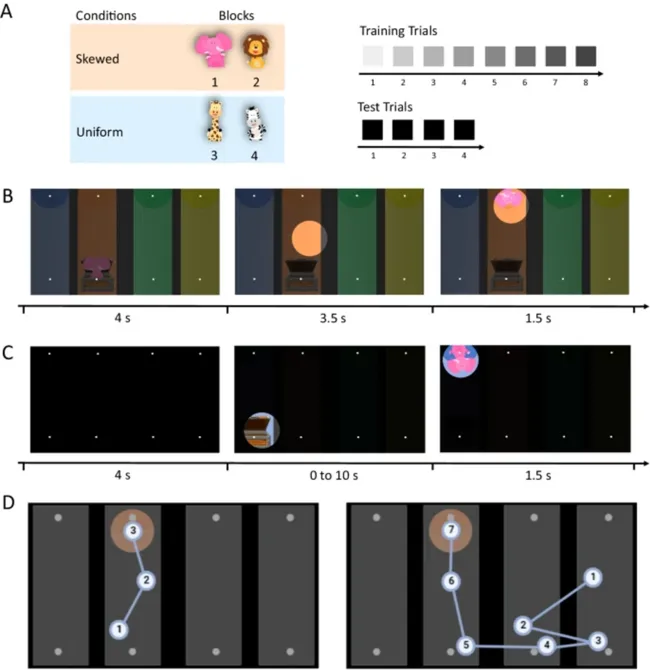Ontogeny
Comparative, Emergence, Eye-tracking & EEG
Our research investigates how infants explore their environment and whether they adapt their learning and exploration to the changing environment. This ability, known as ecological learning, has been demonstrated in children as young as three. Findings about whether infants can do this allow us to better understand the early emergence and mechanisms of ecological learning. To address the questions we focus on, we developed eye-tracking and EEG paradigms to investigate how infants and toddlers aged 10 to 36 months actively explore visual stimuli and real-life novel objects.
For example, in a recent study, toddlers (N = 60, 18-36 months) and adults (N = 42) either learnt that an animal was equally likely to be found in any of four available locations, or that it was most likely to be found in one particular location. Afterwards, they were given control of a torchlight, which they could move with their eyes to explore the otherwise pitch-black task environment. Eye-movement data and Markov models show that, from 24 months of age, toddlers become more exploratory than adults, and start adapting their exploratory strategies to the information structure of the task. These results show that toddlers’ search strategies are more sophisticated than previously thought, and identify the unique features that distinguish their information search from adults’.
Selected publication(s):
